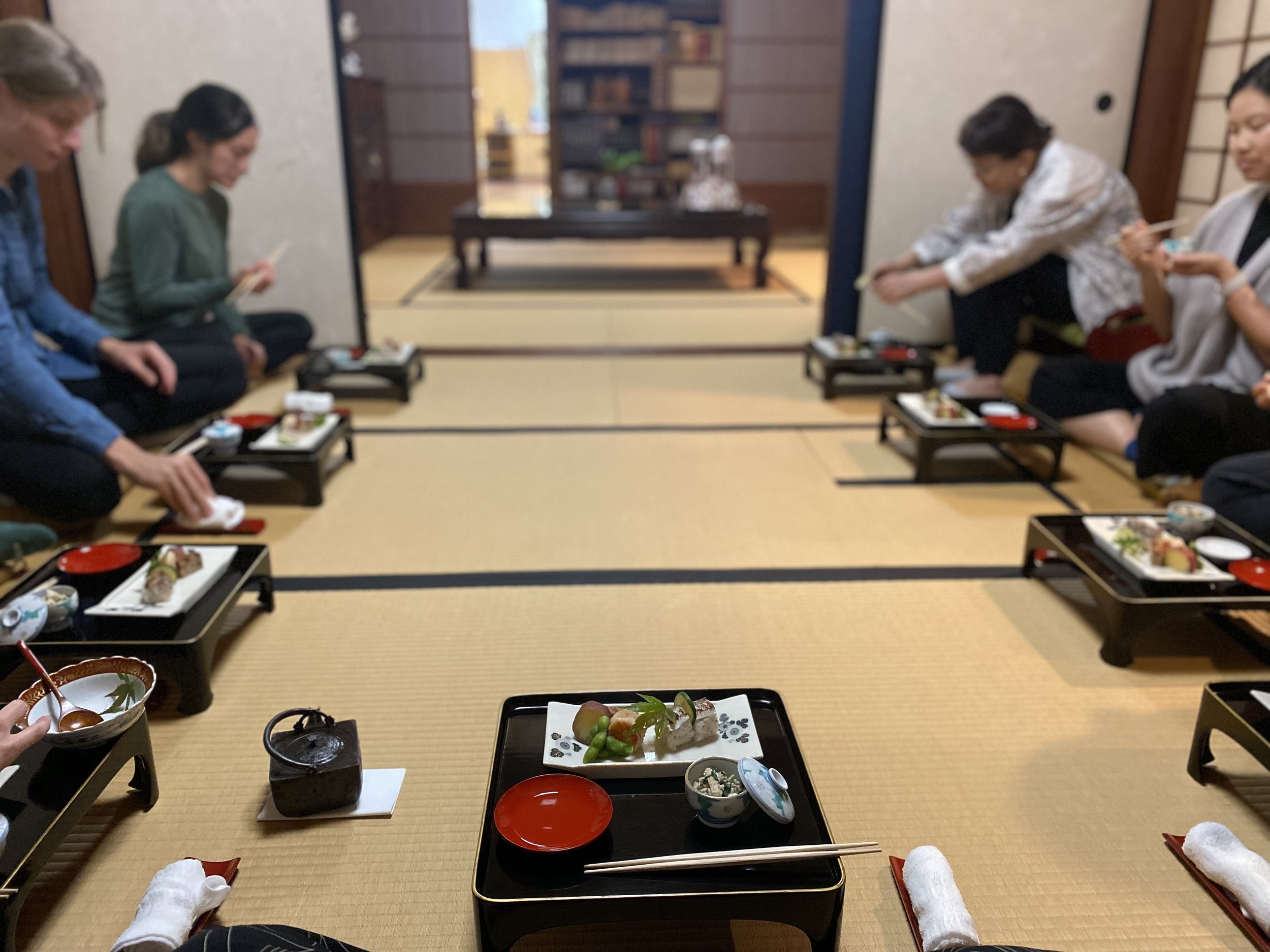How to Place Chopsticks
Do you know how to properly place chopsticks in Japanese dining? Unlike Western dining, where forks and knives are positioned vertically, Japanese chopsticks are always placed horizontally, parallel to the table edge. This practice differs from many other Asian cultures that position chopsticks vertically.
Observing how chopsticks are placed can even offer a clue about who runs a restaurant—if they're positioned vertically, it’s a sign that the establishment is likely not Japanese-owned. Since the majority of "Japanese" restaurants in the U.S. are actually run by non-Japanese people, I can’t help but wish they would at least place chopsticks parallel if they are calling themselves Japanese restaurants!
Interestingly, spoons were only gradually introduced to Japanese culture after the Meiji era (1868–1912), as Western influences spread following the Meiji Restoration—and even more rapidly into households after World War II. Before that, the only exceptions were among aristocratic families and the medical field.
Traditionally, chopsticks were the sole utensil used for meals, and Japanese dishes were designed to be easily lifted by hand, allowing people to drink directly from bowls or bring plates close to their mouths. This explains why Japanese meals typically feature multiple small dishes instead of one large plate.
Over the last half-century, Western-influenced dishes categorized in Japan as “Yōshoku,” such as Japanese curry, hamburg steak, and omurice, have become staples in Japanese households. Today, udon soup often comes with a spoon, and some bowls are now too large to hold by hand. In the US, it has also become standard to serve miso soup with a spoon, a practice not common in Japan. Food culture continues to evolve, but the parallel placement of chopsticks remains unchanged, a tradition upheld for more than a thousand years. Interestingly, China once followed this same practice until the Song Dynasty (960–1279), when chopsticks began to be placed vertically.
Japan has preserved many traditions that originated along the Silk Road, even as they have faded in their countries of origin. Once these customs arrived in Japan, they were carefully maintained, while other regions often lost them due to historical, cultural, and societal changes—whether through invasion, political transformation, or shifts in social structures.
The Japanese Tradition of Individual Dining Sets
Until you sit at a Japanese family dining table, you may not realize that everyone has their own chopsticks, rice bowl, and teacup. Growing up in Japan, my chopsticks were always mine, just as my siblings had their own—each with a different color, size, and design. When setting the table, we carefully placed the correct chopsticks, bowls, and teacups at each family member’s assigned seat. If someone mixed them up, we’d quickly correct them!
Why don’t Japanese families use communal chopsticks and dishware? The answer lies in the traditional Japanese home. Historically, Japanese homes featured tatami rooms with sliding doors, serving as both dining and (sometimes) sleeping areas. Dining sets were stored away, and futons were laid out at night.
Up until the 1950s and 60s, many families still used "Hako-zen"—a personal wooden box that stored an individual’s chopsticks, rice bowl, miso soup bowl, and small plates. At mealtime, each family member would take out their Hako-zen, flip the lid to create a mini dining table (called "O-zen"), and set up their own dishware. After the meal, everything was neatly packed back into the box, which could be stacked and stored on shelves. This system allowed families to maintain individual dining traditions while maximizing space in multi-functional tatami rooms.
I recently discovered that the writing desk my mother has been using was originally our family dining table, long before I was born. What caught my attention was that each seat had its own drawer, where family members stored their personal dining sets—a unique intermix of the Japanese Hako-zen tradition and a Western-style dining table!
This reminded me of a recent dining experience at a local restaurant in Japan, where knives and forks were stored in drawers built into the table. What I initially thought was a fun and unique concept turned out to have historical roots!
While modern Japanese homes now have fixed dining tables, many families still follow the tradition of having their own chopsticks, rice bowls, and teacups. This custom reflects Japan’s deep-rooted dining traditions.
Next time you travel to Japan, stop by a chopsticks or dishware store and take a look at the wide variety of chopsticks available—from simple everyday designs to luxurious, handcrafted pieces.
Disappearing tradition:
When I was little, I remember my grandmother hosting family gatherings in a tatami room with o-zen—individual dining tables. Today, most Japanese people prefer sitting on chairs.
I hosted this style of dinner for my tour group when they stayed at my family home in Gifu. But knowing that sitting on the floor can be uncomfortable, I encouraged everyone to sit casually.
Hako-Zen
I sometimes ask myself why I own so many plates and bowls. I wish the Japanese Hako-zen tradition had prevailed—then, when I needed to move, my entire dining set could fit neatly into one box!
Hako-zen Meets Western Dining Table
I found this table at an interdisciplinary restaurant showcasing Japanese regional produce and craftsmanship, fused with Western cooking techniques—beyond national boundaries.
What I initially thought was just a fun and well-designed piece turned out to have a fascinating connection—my mother has an antique version of this table, which she has been using as her writing and hobby desk!
Copyright © 2025 Yoko Isaji. All Rights Reserved.






